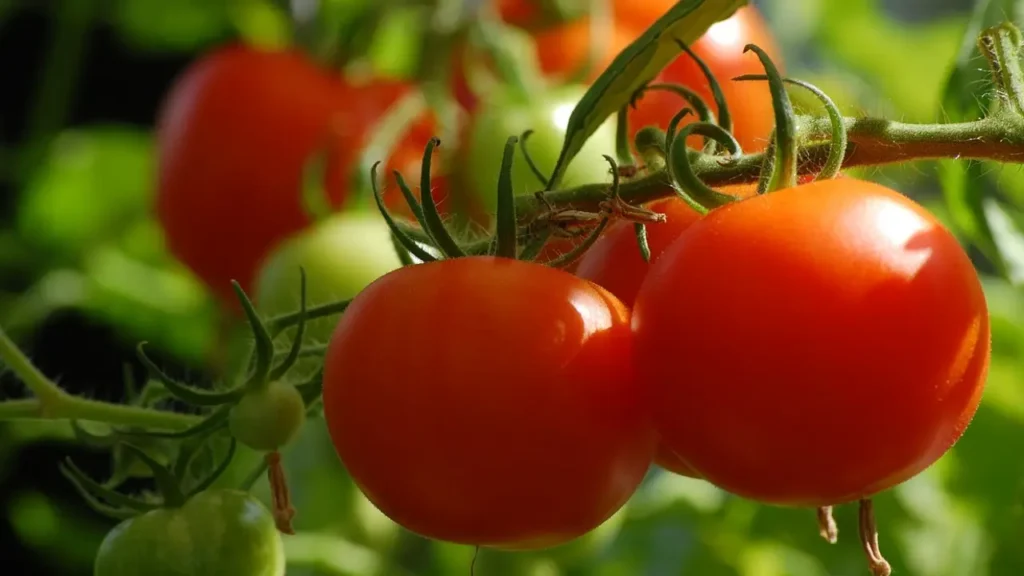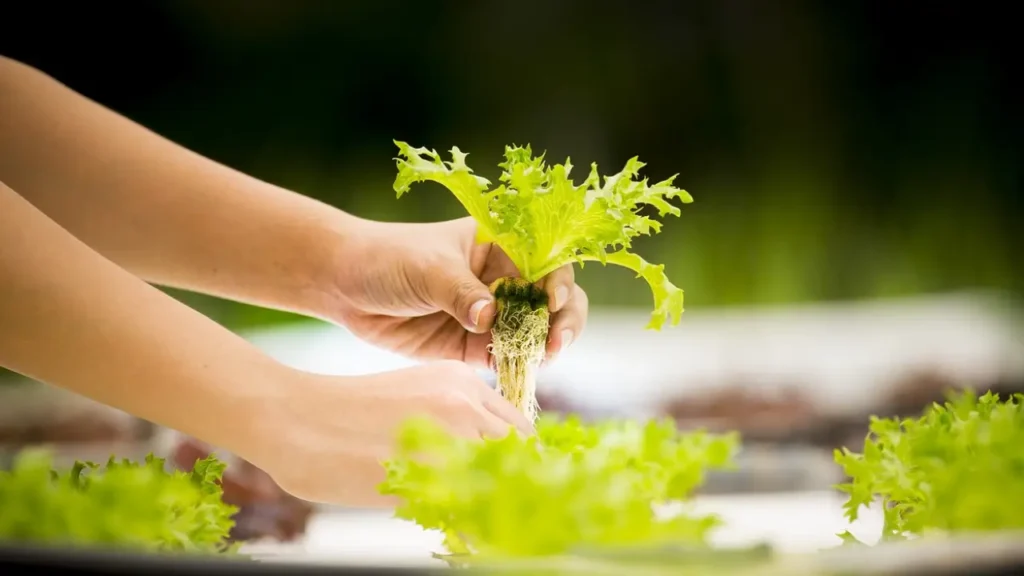As the sun rises and the soil heats up, people get their hopes high for a successful cucumber crop. Everything associated with growing cucumbers is fun from planting right up to the moment when the cucumbers are harvested. It is a process accompanied by the taste of summer. From a large plot of land to a small area, the following guide will help you succeed.
Cucumbers are easy to cultivate in various places. Just think of having your own cucumbers that you can pick and eat every other day for such months. It’s just a few steps and you find yourself heading towards crunch happiness. in this article, you will be able to read about different ways on how to grow cucumbers in your own garden.
Key Takeaways
- There are many ways of growing cucumbers which may include the traditional way of planting the vegetables on the soil, the use of raised beds or even on pots and planters.
- It is appropriate that for any gardening space available or intended as well as the use of cucumbers intended, there is a suitable cucumber variety available to be selected.
- Planting technique and the time of planting play important role in order to determine the kind of cucumber to be produced.
- Regulated watering, applying the right nutrients and controlling diseases and pests are all essential for optimal growth of the plants.
- Some recommended cultivation practices that can enhance yields include trellising or vining varieties to enhance air circulation and ease of picking.
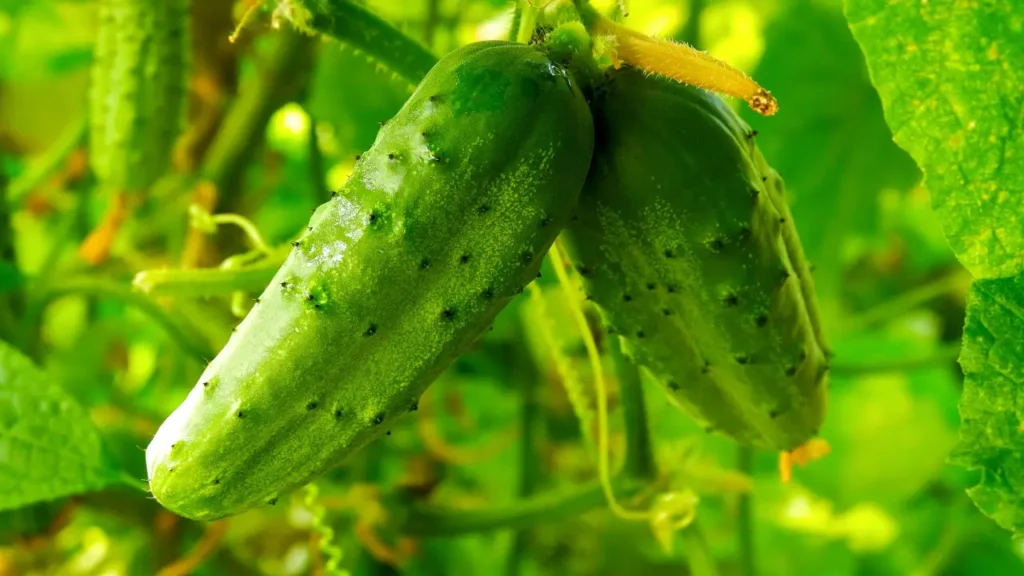
Table of Contents
Understanding Cucumber Varieties
Select cucumbers depending on the space you have available and the purpose for growing cucumbers. There are two types of cucumbers: bush and vining. Bush cucumbers remain compact and do not require much space per plant, occupying 2 to 3 feet only. They are ideal for pots or small garden beds if you don’t use a trellis for them to climb on.
Vining cucumbers require more space but they produce more yields compare to the trailing ones. These cucumbers need a trellis or netting, which allows the air to circulate, keeping the cucumbers free from diseases.
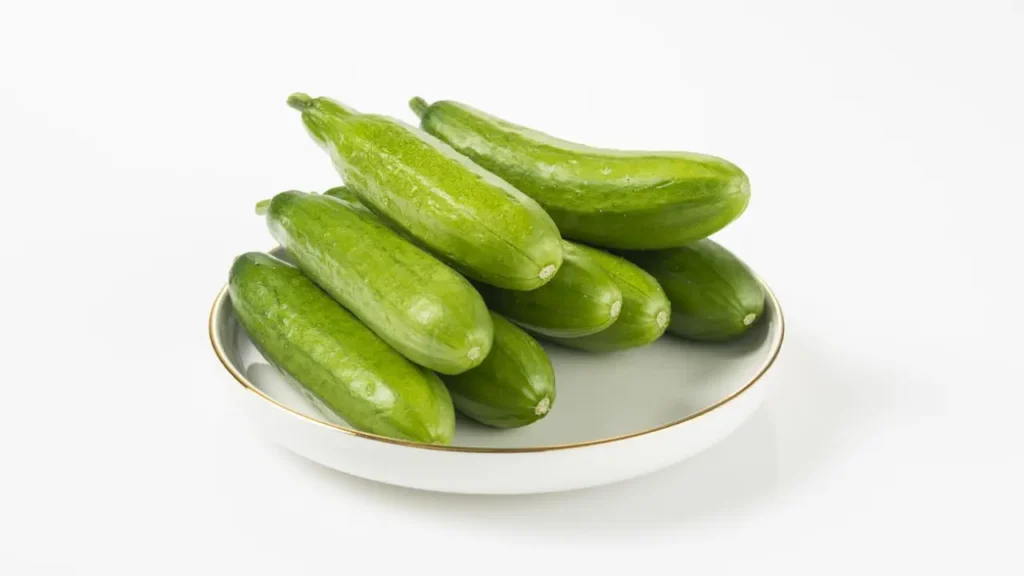
Slicing Varieties
The slicing cucumbers are the type that you usually find in markets. Cucumbers called the ‘Marketmore 76’ is a very common variety and they pick it when it is still young at 6 to 9 inches. For example, the ‘Suyo Long,’ which is derived from Japan, can reach up to 15 inches in length. They might be bush or vining, small shrubs or even trees that grow to a certain height before full-growth is attained. Socrates began as beit alpha slicers mainly raise female flowers meaning they are not pollinated.
Pickling Varieties
Pickling cucumbers are small in size, and it is important that they are not only small but uniform in size for pickling. Most are harvested when about 3 to 5 inches long, but ‘Arkansas Little Leaf’ types can be 4 inches long. Parthenocarp creates such types of fruits which contain few seeds, or in some cases seeds are missing completely. They allow excellent growing under the protected environment of the greenhouse but at a higher cost.
Novelty Cucumbers
The Armenian cucumber even matures and is ready for harvest can reach twelve to fifteen inches long. The ‘Lemon’ cucumber has a yellow and juicy skin resembling a lemon and is round in shape. It is very small of only one inch and has quite an interesting taste to it called the Mexican Sour Gherkin. Cucumbers called “snacking cucumbers” are around 5 inches in length, and can be eaten directly. There are many female flowers in Gynoecious kind, so the fruit will be much more.
Bush, vining, slicing, pickling and novelty cucumbers offer varying characteristics relevant to its size and taste preference. Understanding each type can help make a proper decision concerning you garden or kitchen for a great cooking space.
Preparing the Planting Area
Cucumber crops are planted after the dangers of spring frosts are over. This is a reminder that you may need extra hours to work around your garden. First, dig up all the weeds. Next, use a trowel or shovel to loosen the soil to a depth of one spade depth, preferably to a spades depth. Second, you shall apply a full fertilizer for nutrients required by cucumbers such as potassium, nitrogen, calcium and magnesium. These veggies prefer soils that are well drained and friable with a adequate amounts of organic matter. Therefore, putting compost or manure is a good thing for the garden.
Selecting the Right Garden Space
Spacing for cucumbers should ideally be between 36in and 60in with 12 inches in case one is using the trellis method. Most of them require sunlight and a fertile soil with good drainage. Cucumbers are best planted in rows, a spacing of 3-4 feet in between the rows is ideal.
Amending the Soil
Cucumbers prefer warm, well-draining loamy soil of moderate-to-high fertility and a pH of 6. 0 and 6. 8. They can accommodate to sightly higher pH level, of up to 7. 6. Fill the pot with compost or manure to ensure that water drains well out of the pot while being nutrient dense.
Installing Trellises or Supports
For vining cucumbers, a 6-foot plant support trellis is recommended to provide adequate support for the plant as they grow tall. Trellising the cucumbers helps keep them from the ground. This makes them clean and easier to collect as compared to the other type of fields that might appear to be simpler but actually take so much time to collect.
Timing for Planting Cucumbers
Cucumbers prefer warm areas, which partly explains why they do not go well with cold temperatures. There is also a requirement that it will not be good to plant them in cooler areas of the soil. Remember to make sure that the soil is of right temperature. Use a soil thermometer. It is also important to determine whether the temperature of the soil is between the ranges of 60-70°F an inch down. Typically, the soil takes two weeks after the last frost dates before it attains the required temperature levels to produce germination.
Checking Soil Temperature
Cucumbers should be planted where the climatic conditions are favourable. The best time to go is in the warmer months, but wait for average daily temperatures in the mid-70s°F. Many of them like warm temperatures and are most comfortable between 75 and 85 degrees F. However, no matter what type they are, they cannot endure any frost.
Determining the Last Frost Date
You would do well to check with local extension services to know when exactly the last frost has been known to occur. This helps you decide when to plant your cucumbers since different seeds have different planting requirements. Ideally, the soil should be warm, but not hot, and it should be over the 60-degree Fahrenheit range for proper seed development.
| Soil Temperature for Cucumbers | Last Frost Date Considerations |
|---|---|
| 60-70°F at 1-inch depth | 2 weeks after last expected frost |
| 75-85°F optimal temperature range | Check with local extension for your region |
Planting Cucumber Seeds
At planting time how to plant cucumber seeds should consider spacing and depth values according to the information on the seed packet. Generally, they should be put in the ground at a depth of approximately 1 inch and spaced 6 inches from each other. This could be good for the seeds in order for them to germinate properly as that has been presented.
Spacing and Depth for Seeds
The best thing to do when planting cucumbers in containers is to choose bigger pots. The type that is recommended is one that measures approximately 18 inches and is most suitable for cucumbers. It is advisable to utilize nurseries that feature superior potting mix and plant three seeds per pot, in the middle, at a depth of one inch. When it gets to 4 inches tall remove all but the strongest yam plant to make it healthier and stronger. By so doing, the plant is provided with all it will require to grow and be healthy.
Planting in Containers
Owing to grow well, proper spacing and depth of the cucumbers seedling should be observed carefully. Grown in gardens or in flowering pots, these are the vital stages for a hearty and healthy growth of stumps. Cucumber farming starts here, just follow your how to plant cucumber seeds guide and you will be successful.
Caring for Cucumber Plants
It is important to maintain plenty of water to support cucumber plants’ growth, which is a fact that any farmer should know. To develop and sustain the organisms, soil should remain moist, not waterlogged. Early morning water is preferable as a method of combating with diseases in the case with leaves.
Another aspect that is crucial as far as these plants are concerned is the fertilization. This should be done two times before the more active growing period. One time is when the plants blossom; the other time is after three weeks from when the plants bloom.
But, it is not preferable to add large amounts of fertilizer. It can also make the plants produce too much green for growth and they will develop pests that could affect their yield. This can delay the production of the cucumber.
Watering Requirements
Water is also important when watering cucumbers should be done once a week to one inch deep. They should also be watered in a proper way that is this should be done in a balanced manner. It will enable them to increase in the right manner.
When you water, do so without getting the foliage wet. Both succulents and wet leaves can be vulnerable to diseases.
Fertilizing Cucumbers
You need to fertilize your cucumber plants twice per season. This ushers in replenishment of the nutrients required. The first feeding comes with one week after they bloom and apply balanced fertilizer. Next feed them after three weeks to ensure they are growing well.
However, do not apply excessive fertilizer on the plants, it is toxic and will harm your plants. That could make the plants look more like leafy plants than cucumbers.
Trellising and Supporting Vines
If you want your vining cucumbers to grow well, you must provide it with the correct kind of trellising systems. They allow air circulation and remove cucumbers from the ground reducing likelihood of rotting. This helps them avoid getting sick or being damaged. Before planting make sure you have place a 6 feet high trellis to support the climbing behavior of the vine. It can be just a bar or can be little more sophisticated like an A-frame trellis.
Similarly, follow the growth of your cucumber vines and encourage them to climb up the trellis. This way, the trees have more aeration and it is not difficult to harvest the fruits. As cucumber plants grow very tall, they would require a strong structure to climb on, known as the trellis. Ensure that its height is likely to be around 4 or 5 feet in the air. Moreover, cucumbers appreciate open spaces, so the leaf of a trellis can be duly illuminated. This boosts fruit growth.
There are many trellis kinds and models that are available and it is available for instance in lean-tos and tall cages. In choosing a trellis, it is always advisable to consider the garden you have and its attractions you are fond of. For instance, if you are considering installing a trellis, then a trellis style that can be 3 feet wide and extended to 8 feet high is just what you need.
Using this methodology, 76 inches or 6 feet 4 inches of it to be precise is height above the ground. Cucumber plants are placed four to one tray in this setup. A side can have up to two plants with different attributions depending on the distribution of resources among the sides.
| Trellis Feature | Specification |
|---|---|
| Overall Height | 8 feet |
| Width | 3 feet |
| Height Above Ground | 6 feet 4 inches (76 inches) |
| Number of Plants Accommodated | 4 (2 per side) |
| Material Cost | Approximately 12.31% at Lowe’s |
| Lumber Cost | Around 20%, varying by location |
| Overall Cost | 30% to 40%, potentially lower |
Trellising is not a complicated process, and for this reason, simple tools like a tape measure and a drill are needed for constructing the structure. You also require some special things that are not easy to obtain: This kind of trellis allows cucumbers to grow upwards which is constructed with these tools. This is great since it avails space and also reduces instances of diseases being spread within the compound.
Pollination and Fruit Production
Cucumber pollination is important in the development of its fruits. First, the male flower blooms to help those who bring back the pollen to the plant come. Next the females flowers appear There are different stamens and they are usually arranged in a certain structure. Self pollination was not achieved as seen from getting flowers but no fruits on the plants. Planting flowers that bees could be seen pollinating is another way of boosting their numbers.
Attracting Pollinators
In Ohio, a total of 28 bee species were observed visiting cucumber flowers. Thus the main pollinators in were honey bees. For every ten minutes watching the honey bees visiting cucumber flowers, ten honey bees were recorded. The other insects that contributed to pollination included flies, bumble bees, as well as the squash bees.
However, some insecticides noted to reduce the abundance of the pollinators in the cucumber fields. Enhancing pollination may require targeted approaches in every location to address the problem.
Parthenocarpic Varieties
It is also possible to cultivate parthenogenetic cucumbers so that you can harvest slipper cucumbers as many times as you want. These fertilizations do not even caused through pollination in order to bear fruits. They only have female flowers and hence implies that the reproduce only female flowers. This can be advantageous in cases where a plant cannot attract the necessary amount of pollinators.
Cucumber pollination is very crucial to ensure one gets the best yield of the crop. This is why it is important to know about pollinators and why using parthenocarpic types could really assist. That way you can be assured that your cucumber plants will grow well and produce plenty of cucumbers!
Pest and Disease Management
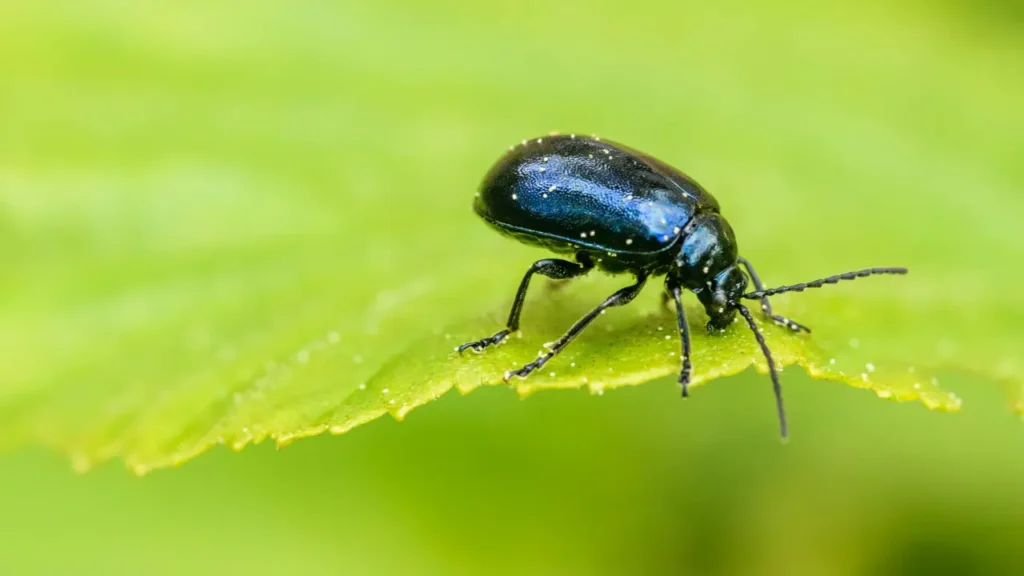
It is always good to take time in managing pests and diseases on the cucumbers especially when the space where they are planted is congested with little or no air provision. They are important in order to get a good harvest which comes by managing the problems.
Common Cucumber Pests
Among them the envisaged pests of cucumber include the cucumber beetle, aphid, squash bug and flea beetles. This is for the fact that; using insecticides that target such specific pests such as liquid Sevin insect killer concentrate. As noted, it is important to adhere to the instructions on product labels a lot. It also important that you wait the appropriate time before harvesting.
Preventing Fungal Diseases
Diseases such as downy mildew, powdery and smut are also dangers that can occur in the growth of crops. It is recommended to train the cucumber plants to grow up a trellis since the availability of good air flow can help in preventing these diseases from occurring. Liquid Daconil Fungicide Ready-To-Use is another preventive measure that one can take to prevent or control the spread of diseases.
A careful examination of the challenges will enable one to prevent their cucumbers from getting affected. This approach will ensure that the end result is a successful harvest.
Harvesting Cucumbers
Cucumbers must be harvested at the just ripe stage to ensure that their succulent and crunchy texture is intact. For slicing kinds, it should cut at 6 to 8-inch lengths. 2 to 6-inch lengths used in pickling types of cucumbers.
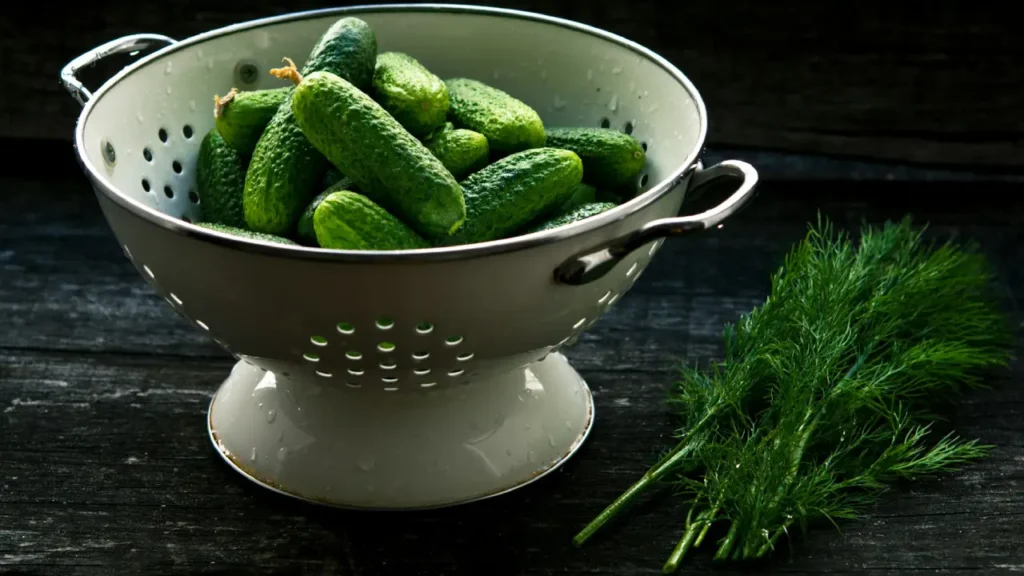
When to Harvest
As for when to harvest, here is the key: observe your plants at least every other day or every third day at the most. Trim off the shoots using scissors or knife, to make clean cuts. This is better than pulling them off: >It to help to keep the plants healthy in order to successfully harvest cucumbers.
There are several marvelous culinary delights in the cucumber family, but don’t wait too long to harvest them. Thin ones could be tough to chew and if they are overripe they could taste bitter. Bear in mind that it is ideal to capture these before the seeds inside become too rigid.
Proper Harvesting Techniques
Harvest just before the first frost killing the plants, leaving about an inch of stem to the tuber. This helps to avoid premature rotting of the fruit as the process will have been controlled perfectly. Harvest as early as possible during the day. The vines are cooler then. This care can help you extend your harvest season.
Since cucumber is a vine plant, which has the tendency of growing more when picked, picking them often will result in more growing. Therefore, it is advisable to continue picking even as you wait for new cucumbers to emerge from the vine. In case the weather is extremely cold, young cucumbers and clusters should be pinched out. This move assists the plant to develop large cucumbers better as it eliminates the struggle of prioritizing between the two objectives.
Conclusion
It’s easy to grow cucumbers and this task can only be made easier through the following steps. It is an enjoyable activity that can decorate your table with vegetables. If you do as these procedures show how to plant, support, water, and defend from the bugs you will yield good yields. It will therefore be helpful to understand the different types of cucumber varieties and the care that they require. And then you can harvest as many succulent cukes as you want during the warm months.
Thus, for cucumber plants to perform optimally, they require the right climatic conditions plus adequate light. They also need to be spaced right and like every other plant, they require proper care and attention. As you water the veggies well and as you give them the essential support as they develop, you can easily achieve home cucumber farming.
That is the information you will get in this guide. Follow these simple steps and before you know it, you will be growing your cucumbers. Not only they will be delicious but will also be perfect for your summer dishes and meals.
Must Read : How to Grow an Avocado from Seed
FAQ :How to grow cucumbers
What are the different types of cucumbers I can grow?
Classification of cucumbers include the following two; The bush cucumbers and the vining cucumbers. Bush types: They have small size and suitable for pots . Whether they need a trellis depends on the particular characteristics of their area and plants. They require more space but then yield very many fruits compare to the vining types. Choose by how you’ll use them: like into slices, pickles, or fun shapes.
When is the best time to plant cucumber seeds?
Grow cucumbers after the grounds get warm. Ensure that the soil they will be sown in is at the right temperature, 60-70°F.
How deep and how far apart should I plant cucumber seeds?
In most cases, the cucumber seeds are sowed at a one inch depth and then at six inch intervals. With pinpoint precision, plant 3 seeds to each 18 inch growing pot. Thin the plants when they are 4 inches tall and only ensure that you are left with the most healthy ones.
How do I ensure my cucumber plants get enough water?
To maintain the health of cucumbers, it required frequently water. Soil should be moist but not waterlogged. Watering reduces the variety of diseases that may affect the leaves and it is best to water the plants in the morning.
Do cucumber plants need to be trellised or supported?
High vines like cucumbers can be very well trained to climb on the trellis. It helps to keep them and fruits free from diseases and pests. You should construct a trellis, about 6′ tall, before planting the vines.
How do I know when my cucumbers are ready to harvest?
Cucumbers must be harvested when they are ready for use or when they are at suitable sizing like 6- 8 inches for table use. Cut them off the plant with sharp shears.
What are some common pests and diseases that affect cucumbers?
It’s advised to control cucumber beetles, aphids and other pests. First, there are bacterial diseases Second, there are viral diseases. Third, there are fungal diseases. These problems can be fought by good air and the right treatments.

